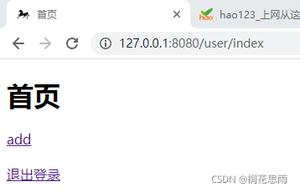Python模拟浏览器发送http请求 - shuzihua

Python模拟浏览器发送http请求
Python模拟浏览器发送http请求
centos安装python2.7c#byte转化为string
1.使用 urllib2 实现
#! /usr/bin/env python# -*- coding=utf-8 -*-
import urllib2
url="https://www.baidu.com"
req_header = {"User-Agent":"Mozilla/5.0 (Windows NT 6.1) AppleWebKit/537.11 (KHTML, like Gecko) Chrome/23.0.1271.64 Safari/537.11",
"Accept":"text/html;q=0.9,*/*;q=0.8",
"Accept-Charset":"ISO-8859-1,utf-8;q=0.7,*;q=0.3",
"Accept-Encoding":"gzip",
"Connection":"close",
"Referer":None #注意如果依然不能抓取的话,这里可以设置抓取网站的host
}
req_timeout = 5
req = urllib2.Request(url,None,req_header)
resp = urllib2.urlopen(req,None,req_timeout)
html = resp.read()
print(html)
2.使用 requests 模块
(1).get请求
#-*- coding:utf-8 -*-import requests
url = "https://www.baidu.com"
payload = {"key1": "value1", "key2": "value2"}
r = requests.get(url, params=payload)
print r.text
(2).post请求
#-*- coding:utf-8 -*-import requests
url1 = "http://www.exanple.com/login"#登陆地址
url2 = "http://www.example.com/main"#需要登陆才能访问的地址
data={"user":"user","password":"pass"}
headers = { "Accept":"text/html,application/xhtml+xml,application/xml;",
"Accept-Encoding":"gzip",
"Accept-Language":"zh-CN,zh;q=0.8",
"Referer":"http://www.example.com/",
"User-Agent":"Mozilla/5.0 (Windows NT 6.1; WOW64) AppleWebKit/537.36 (KHTML, like Gecko) Chrome/42.0.2311.90 Safari/537.36"
}
res1 = requests.post(url1, data=data, headers=headers)
res2 = requests.get(url2, cookies=res1.cookies, headers=headers)
print res2.content#获得二进制响应内容
print res2.raw#获得原始响应内容,需要stream=True
print res2.raw.read(50)
print type(res2.text)#返回解码成unicode的内容
print res2.url
print res2.history#追踪重定向
print res2.cookies
print res2.cookies["example_cookie_name"]
print res2.headers
print res2.headers["Content-Type"]
print res2.headers.get("content-type")
print res2.json#讲返回内容编码为json
print res2.encoding#返回内容编码
print res2.status_code#返回http状态码
print res2.raise_for_status()#返回错误状态码
(3).使用session对象的写法
#-*- coding:utf-8 -*-import requests
s = requests.Session()
url1 = "http://www.exanple.com/login"#登陆地址
url2 = "http://www.example.com/main"#需要登陆才能访问的地址
data={"user":"user","password":"pass"}
headers = { "Accept":"text/html,application/xhtml+xml,application/xml;",
"Accept-Encoding":"gzip",
"Accept-Language":"zh-CN,zh;q=0.8",
"Referer":"http://www.example.com/",
"User-Agent":"Mozilla/5.0 (Windows NT 6.1; WOW64) AppleWebKit/537.36 (KHTML, like Gecko) Chrome/42.0.2311.90 Safari/537.36"
}
prepped1 = requests.Request("POST", url1,
data=data,
headers=headers
).prepare()
s.send(prepped1)
"""
也可以这样写
res = requests.Request("POST", url1,
data=data,
headers=headers
)
prepared = s.prepare_request(res)
# do something with prepped.body
# do something with prepped.headers
s.send(prepared)
"""
prepare2 = requests.Request("POST", url2,
headers=headers
).prepare()
res2 = s.send(prepare2)
print res2.content
"""另一种写法"""
#-*- coding:utf-8 -*-
import requests
s = requests.Session()
url1 = "http://www.exanple.com/login"#登陆地址
url2 = "http://www.example.com/main"#需要登陆才能访问的页面地址
data={"user":"user","password":"pass"}
headers = { "Accept":"text/html,application/xhtml+xml,application/xml;",
"Accept-Encoding":"gzip",
"Accept-Language":"zh-CN,zh;q=0.8",
"Referer":"http://www.example.com/",
"User-Agent":"Mozilla/5.0 (Windows NT 6.1; WOW64) AppleWebKit/537.36 (KHTML, like Gecko) Chrome/42.0.2311.90 Safari/537.36"
}
res1 = s.post(url1, data=data)
res2 = s.post(url2)
print(resp2.content)
3.其他的一些请求方式
>>> r = requests.put("http://httpbin.org/put")>>> r = requests.delete("http://httpbin.org/delete")
>>> r = requests.head("http://httpbin.org/get")
>>> r = requests.options("http://httpbin.org/get")
Tags: http http请求 python 发送 模拟
centos安装python2.7c#byte转化为string
Python实现模拟浏览器请求及会话保持操作示例
更新时间:2018年07月30日 10:05:37 作者:初行 我要评论
这篇文章主要介绍了Python实现模拟浏览器请求及会话保持操作,结合实例形式分析了Python基于urllib与urllib2模块模拟浏览器请求及cookie保存会话相关操作技巧,需要的朋友可以参考下
本文实例讲述了Python实现模拟浏览器请求及会话保持操作。分享给大家供大家参考,具体如下:
python下读取一个页面的数据可以通过urllib2轻松实现请求
?
1 2 |
|
涉及到页面的POST请求操作的话需要提供头信息,提交的post数据和请求页面。
其中的post数据需要urllib.encode()一下,其实就是将字典转换成“data1=value1&data2=value2”的格式。
?
1 2 3 4 5 6 7 8 9 10 11 12 13 14 15 |
|
请求之后浏览器会有一个会话保持的过程,会话都是保存在一个cookie里面的,下一次页面的请求会把cookie放到请求头,如果cookie丢失会话也就断开了。
在python下面需要设置一下cookie的保持
?
1 2 3 4 5 6 |
|
下面是将以上知识点汇总写的一个库文件,方便使用:
?
1 2 3 4 5 6 7 8 9 10 11 12 13 14 15 16 17 18 19 20 21 22 23 24 25 26 27 28 29 30 31 32 |
|
这个是测试文件,因为读者没有测试环境,需要自己搭建或者找个网站测试:
?
1 2 3 4 5 6 7 8 9 10 11 12 |
|
更多关于Python相关内容可查看本站专题:《Python Socket编程技巧总结》、《Python数据结构与算法教程》、《Python函数使用技巧总结》、《Python字符串操作技巧汇总》、《Python入门与进阶经典教程》及《Python文件与目录操作技巧汇总》
以上是 Python模拟浏览器发送http请求 - shuzihua 的全部内容, 来源链接: utcz.com/z/386608.html






